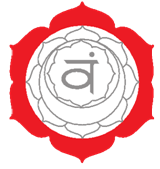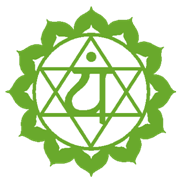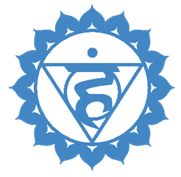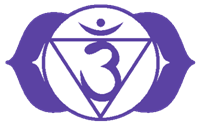Cakras

The cakras are pranic centers within the human framework. The cakra may be described as subtle centers of operation in the body of sakti or powers of various Tattvas or Principles which constitute the body sheaths. Thus the five lower cakras from Mooladhara to Visuddhi are centers of the Bhutas, or five forms of sensible matter. The ajna and other cakras in the region ion between it and the Sahasrara are the center of the Tattvas constituting the mental sheaths, while, the Sahasrara or thousand-petalled lotus at the top of the brain, is the blissful abode of parama siva-sakti which is the state of pure consciousness.
In each person, there are myriads of cakras .However, only a few principal ones are utilized in yogic practises. These few are the ones which span the full spectrum of man’s being from the gross to subtle. The main cakras are;
- Mooladhara
- Svadhisthana
- Manipura
- Anahata
- Visuddhi
- Ajna
- Sahasrara
Yogic Cakra Symbolism: – The use of cakras as a means to spiritual awakening is widely recognized by most religions and mind expansion sects of India. It is particularly popular in Tantra, Yoga and Buddhism.
Attributes of cakras: – The following are very basic attributes that we associate with the main cakras.
- Mooladhara: –It is symbolized by four petalled deep red coloured lotus .In the centre is a yellow square, the yantra of ‘prthvi tattwa’the earth element and the béja mantra‘lam’. Resting on top the inverted triangle is the béja mantra ‘lam’, inside the bindu, over the mantra, reside the elephant deva Gaëeñha and the Devi Däkini, who has four arms and brilliant red eyes. She is the carrier of ever pure intelligence.
Mooladhara cakra

The location is in the region of the perineum. It is slightly different in man and woman as follows:
Man: midway between the anus and the sexual organ, a centimeter or so above the skin surface.
Woman: at the cervix, where the vagina and the uterus join.
It is the first cakra in the spiritual evolution of man, where one goes beyond animal consciousness and starts to be a real human being. It is also the last cakra in the completion of animal evolution. From Mooladhara cakra upwards are the other cakras which are concerned with illumination and evolution of the higher men or supermen. Mooladhara cakra has a control over the entire range of excretory and sexual functioning in men.
- Svadhisthana cakra

Svadhisthana:-This cakra is symbolized by a crimson lotus with six petalled vermilion lotus. In the centre is a white crescent moon, the yantra of aphah tattva, the water element, and the bija mantra ‘vam’. The crescent moon yantra and bija mantra are riding on a crocodile, symbolizing the subterranean movement of the karmas .within the bindu of the mantra reside the deva Visnu and the Devi Rakini. Visnu has four arms, his body is of a luminous blue, he is wearing yellow raiment and he is beautiful to behold. Rakini is the color of a blue lotus and she is clothed in celestial raiment and ornaments.
The location is at the base of the spine at the coccyx (the tail bone).
It corresponds to the sacral plexus of nerves and controls the conscious in man.
- Manipura cakra

Manipura:-This cakra is depicted as a bright ten petalled yellow lotus .Within the lotus is a fiery red triangle, the yantra of Agni tattva, the fire element, and the bija mantra ‘ram’. The animal which serves as the vehicle for Manipura is ‘ram’, this symbol of assertiveness and energy. In the bindu resides the deva Rudra and devi Lakini. Rudra is of a pure vermilion hue and is smeared with white ashes. He is three-eyed and of an ancient aspect. Lakini, the benefactress of all, is four-armed, of dark complexion and radiant body. The location is in the middle spine directly behind the navel. It corresponds to the solar plexus and controls the entire process of direction, assimilation and temperature regulation in the body.
- Anahata cakra

- Anahata: – This cakra is depicted as a twelve petalled blue lotus. The bija mantra ‘yam’ which is dark grey in color. Within the bindu of this mantra is the presiding deva, Isa (Lord in an all pervading form), who is lustrous like the sun. With him is the Devi Kakini who is yellow in color, three eyed, four armed auspicious and exhilarated. In the centre of the lotus is a hexagon formed by two interlacing triangles. This is the yantra of vayu tattva, the air element and the vehicle is swift black; it is treated as the symbol of alertness and compassion. Anahata cakra is the centre of unconditional love. The location is in the spine directly behind the heart perhaps directly behind the centre of the chest is a more exact description. It lies in the vertebral column behind the base of the heart, at the level of the depression in the sternum. It corresponds to the cardiac plexus of nerves, and controls the function of heart, the lungs, the diaphragm and other organs in this region of the body.
5.Visuddhi:-It is symbolized by a sixteen petalled violet lotus. In the centre of the lotus is a white circle,
the yantra of akasa tattva, the ether element, and the bija mantra is ‘ham’. The animal related to Visuddhi cakra is a white elephant. The Goddess is Sakini who is purer than the ocean of the nectar that flows down from the moon region. Her raiment is yellow and in her four hands she holds the
Visuddhi cakra
bow, the arrow, the noose and goat. Visuddhi belongs to fifth loka, the plane of Janah. The location is on the front surface of the throat in the region of the Adam’s apple and the thyroid gland.
The cakra corresponds to the cervical plexus of nerves and controls the thyroid complex and also some systems of articulation, the upper palate and the epiglottis.
- Ajna cakra

Ajna: – cakra is depicted as a two petalled silver blue lotus .Which represents the sun and moon or Ida and Pingala -the positive force, and Ida- the negative force. Which are of ajna cakra. He shines like a chain of lighting flashes. The goddess is the pure minded Häkiné whose six faces are like so many moons. The location is at the top of the spine in the centre of the head. It lies in the region of the medulla oblongata and the pineal gland. The Bhrumadhya, the direct trigger or switch of ajna, lies in the centre of the two eyebrows on the forehead. The cakra controls the muscles and the onset of sexual activity of men. Tantra and Yoga maintain that ajna cakra, the command centre, has complete control over all the functions of disciple’s life. These 6 cakras serve as switches for turning on different parts of the brain. The awakening which is brought about in the cakras is conducted to the higher centers in the brain via the nadis.
There are also higher centers in the brain which are commonly referred to in Kundalini Yoga Bindu and Sahasrara. Bindu is located at the top of the back of the head, where Hindu Brahmins keep a tuft of hair. This is the point where oneness first divides itself into many. Bindu feeds the whole optic system and is also the seat of nectar or amåita. Bindu word means drop or point. It is more correctly termed bindu visarga, which literally means ‘falling of the drop’. Bindu is represented by the crescent moon and a white drop, which is nectar dripping down to Visuddhi cakra. It is the ultimate source out of which all things return. The seat of nectar –In many of the Tantric texts it is written that Bindu the moon, produces a very intoxicating secretion. Yogis can live on this ambrosial fluid. Its secretion awakens and controls in the body, then one needs nothing more for the survival. The maintenance of the body’s vitality becomes independent of food. The poison center:-Besides producing nectar, bindu is also responsible for the production of poison. The poison gland and the nectar gland are almost simultaneously situated. We may wonder if by awakening Bindu there any danger is stimulating the poison glands. If Bindu and Visuddhi are stimulated at the same time there is absolutely no danger, because Bindu controls the nectar gland and Visuddhi has a bearing on both nectar and poison. As long as nectar is flowing, the poison can do no harm. Also if a yogi has purified his body through Hatha Yoga and the practises of Dhyana and Raja Yoga, the poison glands are utilized for the production of nectar.
- Sahasrara cakra

Sahasrara:- Thousand petalled lotus of all colours . It is supreme. It is the final culmination of Kundalini sakti. It is the seat of higher awareness. Sahasrara is saturated at the top of the head and is physically correlated to the pituitary gland which controls each and every gland and system of the body.
